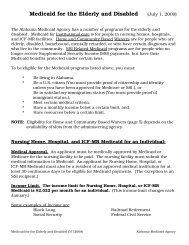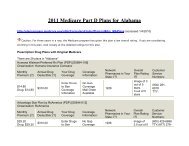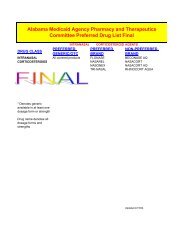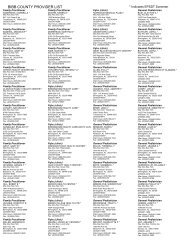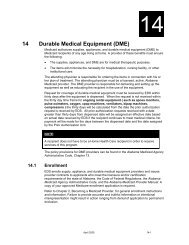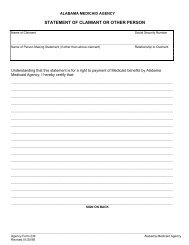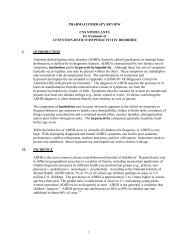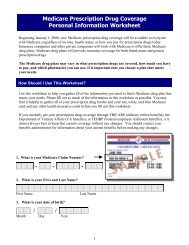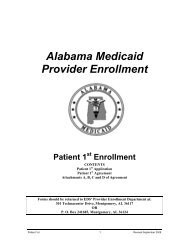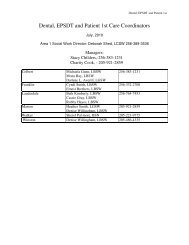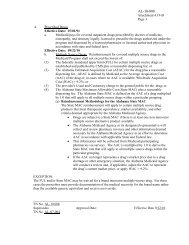Appendix A Well Child Check-Up (EPSDT)
Appendix A Well Child Check-Up (EPSDT)
Appendix A Well Child Check-Up (EPSDT)
Create successful ePaper yourself
Turn your PDF publications into a flip-book with our unique Google optimized e-Paper software.
<strong>Well</strong> <strong>Child</strong> <strong>Check</strong>-<strong>Up</strong><br />
If the primary insurance is not a HMO, bill the appropriate “office visit” code.<br />
Once the claim has been paid/denied from the patient’s other insurance, a claim<br />
may be filed with Medicaid utilizing the same “office visit” code with an EP<br />
modifier appended. When billing an office visit code for an interperiodic code,<br />
always append the EP modifier or the visit will count against benefit limits.<br />
NOTE:<br />
If any other treatments are provided the same day (injections, lab, etc.), a “1” or<br />
“4” must also be reflected in Block 24h, on each line item, or the claim will deny.<br />
NOTE:<br />
Effective January 1, 2007 and thereafter, interperiodic screening codes have<br />
changed. The codes for interperiodic screenings must be billed with an EP<br />
modifier and are as follows:<br />
99211 EP through 99215 EP for office and/or outpatient interperiodic<br />
screenings<br />
99233 EP for Inpatient interperiodic screenings<br />
The new interperiodic screening codes will count against office /hospital visit<br />
limits if billed without an EP modifier.<br />
The Evaluation and Management code level of care chosen must be supported<br />
by medical record documentation.<br />
Each child’s primary insurance must be billed first, and then Medicaid as the<br />
payor of last resort.<br />
See page A-24 for a crosswalk of codes used for Interperiodic Screenings.<br />
A-24 January 2011




